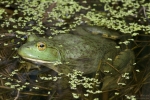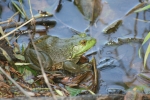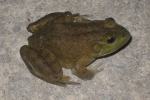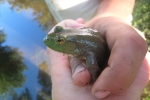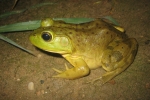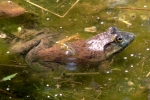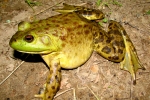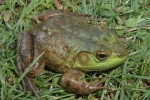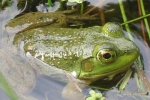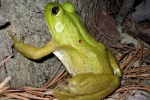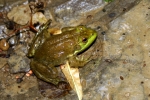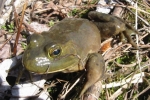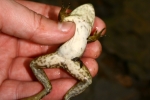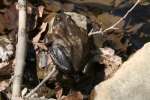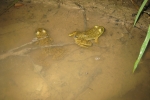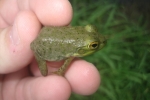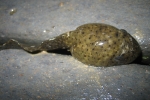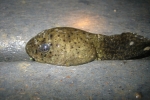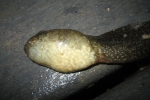American Bullfrog
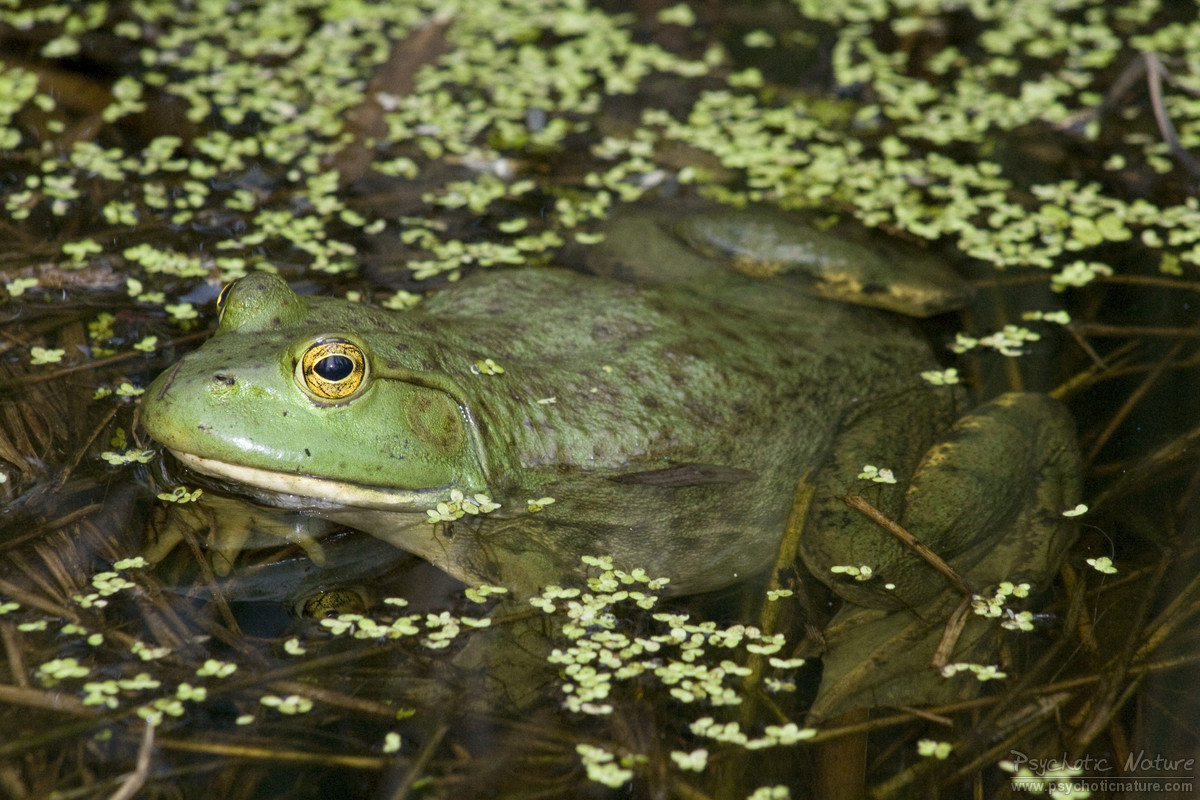
Scientific Name: Lithobates catesbeianus
Size: 3.5-8 inches (5.7-11.4) in length
Status: Abundant
Habitat:
A variety of permanent aquatic habitats ranging from small ponds to the margins of large lakes, streams, rivers, creeks and backwaters.
Description:
Large species. The background color varies from green to brownish, often with splotches of darker areas. The color on their underside ranges from white to a yellowish color. The legs may have indistinct dark bars. Bullfrogs are large frogs that are often confused with Green frogs. The best way to tell them apart is their glandular folds. On a bullfrog, this fold starts at the eye and wraps around tympanum, while on a green frog it stays straight and goes down the back.
- The dorsal color is bright leaf green to olive, olive brown or brown. The dorsal pattern varies with each individual that may include mottling or marbles dark brown to black pigment on the back and sides of the body.
- The ventral is dirty white and may have black mottling.
- The legs may have indistinct dark bars.
- Recently metamorphosed or sub adults are greenish grey with small scattered black spots.
- Large species.
- The body is robust.
- The head is large and broad with a rounded and blunt snout.
- The eyes are located high on top of the head.
- The tympanum is large and visible.
- The fore legs are strong.
- The hind legs are long and muscular with webbing on the toes.
- A short glandular fold starts at the eye and curves around the top of the tympanum and ends in front of the forelegs.
- The toe tips are pointed.
- The bullfrog lacks a dorsal fold.
- The dorsal skin is smooth to pebbled in texture and may occasionally have small warts.
- The ventral skin is smooth.
- Large-sized. Average 10-14 cm
- The dorsal is dark and becomes lighter laterally.
- The ventral is yellowish.
- The eyes are positioned high on the head.
- The tail is lighter than the body.
- The tail crest is translucent with small black dots.


May be Confused With:
References:
- Hulse, C. and McCoy C. J. and Ellen Censky ,1998. Amphibians and Reptiles of Pennsylvania and the Northeast. 159-164pp
- Wayne Fidler
- Jeff Hankey
- Bob Hamilton
- Jaon Poston
- Chris Harrison
- Don Becker (psychoticnature.com)
Heads up!
Please contribute your observation of this and other herps to the Pennsylvania Amphibian and Reptile Survey. Your help is needed.
